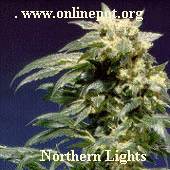|
We Update Daily!
 Custom Search Custom Search
Chris S. Kenoyer. Owner
MMJ Patient, Medical Activist,
Online Patients Advocate,
Online MMJ News Journalist
My Medical Bio
Follow Us Now On Twitter
@MedicalMMJMan
Or Follow Us Now
On Facebook
Email Us Here
olpwebs@yahoo.com
Or Email Us Securely Here
MedicalMMJMan@countermail.com
NEW 100% Encrypted Email Server
OLP’s Free MMJ News EList
Get The Latest In MMJ News
Press Contact Info
Is CBD? A Possible Cure For
Breast Cancer..? And All The Other
Many Forms & Types Of Cancer..?
Learn More About CBD Here
***************************
Advertise Here On OnlinePot
Rates As Low As $50 a Year
24/7 – 365 Days A Year Of Sales!
***********************************
Website Navigational Links
Main Start Page 2
**************************
Latest Marijuana News Reports
*********************************
Parody’s Cartoons US
Government Grown Pot,
Term Papers, School
Reports, & Thesis’s On
Marijuana & Cannabis
*********************************
Amsterdam A to Z
********************************
Canadian Marijuana Websites
*******************************
Church’s & Pot Cannabis
*****************************
Co-Ops, Clinics, Dispensary’s
*****************************
Marijuana Doctors & Clinics
****************************
Pot Cooking Recipes
****************************
Drug Testing A To Z
***************************
Pot Games
****************************
Pot Songs Video’s
****************************
100’s Of Grow Guides
***************************
Hash A- Z
***************************
Cannabis Legal Info, Drug
Lawyers, State, Federal Laws,
State & Supreme Court Rulings
**********************
POW’s Of The MMJ War!
*****************************
Other Marijuana Websites
Reciprocal Link Exchange
****************************
Medical Marijuana Studies,
Research Report’s, Medical
Cannabis Clinic Study’s
****************************
Parody’s & Cartoons
When We All Need A Good Laugh!
****************************
Avoiding Online MOM Scammers
Newly Re-Updated Info!
*****************************
The Politics Of Contraband
Medical Marijuana In The Mail?
******************************
The Hall Of Shame Section
The Online MOM Scammers
*****************************
Online MOM Providers Ads
****************************
Politicians & Voters Rights
****************************
Medical Marijuana, Strains
****************************
The OG Marijuana Strain Guide
****************************
800+ FAQ Growing Questions
****************************
Patients Spiritual Guidance,
Free Online Crisis Help Center
****************************
Online Marijuana Seed Banks
****************************
Maximum Security Section
Just Updated!
*****************************
Traveling Tips, Guides, B & B’s
****************************
Vaporizers A To Z
*****************************
Online Pot Video’s & Movies
**********************************************
Please Visit Both Of Our Sister Websites!
Maine Patients Coalition.org
The Reefer Madness Teaching Museum.org
Listen Right Here Online!
To Original 1930-1950’s
Reefer Madness Propaganda
Radio Shows And Programs
Before TV There Were
"Radio Stars"



*********************************
Legal Disclaimer
Guest Book
Translate Text or Web Page Go To:
Language Tools Google Translations
Article Submissions & News
Reports Are Always Gladly
Accepted Here.

No part of this site maybe used or
reproduced in whole or in part
without the written consent of the
Copyright Owner
www.onlinepot.org
OLP ENTERPRISES L3C
1999-2014 Copyright
© All rights reserved
OnlinePot assumes no legal liability for any products, or information or
news posted, services offered, Or
any contests or give away’s offered.
|
|
Marijuana Botany An Advanced Study:
The Propagation and Breeding of Distinctive Cannabis
The Propagation and Breeding of Distinctive Cannabis All 5 Grow Chapters Online
Return Back To OnlinePot’s Grow Guides
Main Grow Page#1 Or Main Grow Page#2

Marijuana Botany
An Advanced Study: The Propagation and Breeding of Distinctive Cannabis
by Robert Connell Clarke
CHAPTER 1
Sinsemilla Life Cycle of Cannabis
CHAPTER 2
Propagation of Cannabis
CHAPTER 3
Genetics and Breeding of Cannabis
CHAPTER 4
Maturation and Harvesting of Cannabis
Introduction
Cannabis, commonly known in the United States as marijuana, is a wondrous plant an ancient plant and an ally of humanity for over ten thousand years. The pro- found impact Cannabis has had on the development and spread of civilization and conversely, the profound effects we've had on the plant's evolution are just now being discovered. Cannabis was one of the earliest and most important plants placed under cultivation by prehistoric Asian peoples. Virtually every part of the plant is usable. From the stem comes hemp, a very long, strong fiber used to make rope, cloth, and paper renowned for durability. The dried leaves and flowers become the euphoriant, marijuana, and along with the root, are also used for numerous medi- cines. The seeds were a staple food in ancient China, one of their major "grains." Cannabis seeds are somewhat unpala- table and are now cultivated mainly for oil or for animal feed. The oil is similar to linseed and is used for paint and varnish making, fuel, and lubrication. Cultivated Cannabis quickly spread westward from its native Asia and by Roman times hemp was grown in almost every European country. In Africa, marijuana was the pre- ferred product, smoked both ritually and for pleasure. When the first colonists came to America they, quite naturally, brought hemp seed with them for rope and home-spun cloth. Hemp fiber for ships' rigging was so im- portant to the English navy that colonists were paid boun- ties to grow hemp and in some states, penalties were imposed on those who didn't. Prior to the Civil War, the hemp industry was second only to cotton in the South. Today, Cannabis grows around the world and is, in fact, considered the most widely distributed of all culti- vated plants, a testimony to the plant's tenacity and adapt- able nature as well as to its usefulness and economic value. Unlike many plants, Cannabis never lost the ability to flourish without human help despite, perhaps, six millennia of cultivation. Whenever ecological circumstances permit, the plants readily "escape" cultivation by becoming weedy and estab- lishing "wild" populations. Weedy Cannabis, descended from the bygone hemp industry, grows in all but the more arid areas of the United States. Unfortunately, these weeds usually make a very poor grade marijuana. Such an adaptable plant, brought to a wide range of environments, and cultivated and bred for a multitude of products, understandably evolved a great number of dis- tinctive strains or varieties, each one uniquely suited to local needs and growing conditions. Many of these varieties may be lost through extinction and hybridization unless a concerted effort is made to preserve them. This book pro- vides the basis for such an undertaking. There are likely more varieties of marijuana being grown or held as seeds in this country than any other. While traditional marijuana growers in Asia and Africa, typically, grow the same, single variety their forebears grew, American growers seek and embrace varieties from all parts of the world. Very potent, early-flowering varieties are especially prized because they can complete maturation even in the northernmost states. The Cannabis stock in the United Nations seed bank is at best, depleted and in dis- array. American growers are in the best position to prevent further loss of valuable varieties by saving, cataloguing, and propagating their seeds. Marijuana Botany-the Propagation and Breeding of Distinctive Cannabis is an important and most welcome book. Its main thrust is the presentation of the scientific and horticultural principles, along with their practical ap- plications, necessary for the breeding and propagation of Cannabis and in particular, marijuana. This book will appeal not only to the professional researcher, but to the mari- juana enthusiast or anyone with an eye to the future of Cannabis products. To marijuana growers who wish to improve or up- grade their varieties, the book is an invaluable reference. Basic theories and practices for breeding pure stock or hybrids, cloning, grafting, or breeding to improve quali ties such as potency or yield, are covered in a clear, easy- to-follow text which is liberally complemented with draw- ings, charts, and graphs by the author. Rob Clarke's drawings reflect his love of Cannabis. They sensitively capture the plant's elegance and ever-changing beauty while being always informative and accurately rendered. The reader not familiar with botanical terms need not be intimidated by a quick glance at the text. All terms are defined when they are introduced and there is also a glos- sary with definitions geared to usage. Anyone familiar with the plant will easily adopt the botanical terms. Years from now, many a marijuana smoker may un- knowingly be indebted to this book for the exotic varieties that will be preserved and new ones that will be developed. Growers will especially appreciate the expert information on marijuana propagation and breeding so attractively and clearly presented. Mel Frank author, Marijuana Growers' Guide
Preface
Turn again our captivity, 0 Lord, as the streams in the dry land. They that sow in tears shall reap in joy. He that goeth forth and weepeth, bearing precious seed, shall doubtless come again with rejoicing, bringing his sheaves with him. -Psalms 126: 4-6 Cannabis is one of the world's oldest cultivated plants. Currently, however, Cannabis cultivation and use is illegal or legally restricted around the globe. Despite constant official control, Cannabis cultivation and use has spread to every continent and nearly every nation. Cultivated and wild Cannabis flourishes in temperate and tropical climates worldwide. Three hundred million users form a strong un- dercurrent beneath the flowing tide of eradication. To judge by increasing official awareness of the economic potentials of Cannabis, legalization seems inevitable al- though slow. Yet as Cannabis faces eventual legalization it is threatened by extinction. Government-sanctioned and -supported spraying with herbicides anddd other forms of eradication have chased ancient Cannabis strains from their native homes. Cannabis has great potential for many commercial uses. According to a recent survey of available research by Turner, Elsohly and Boeren (1980) of the Research Insti- tute of Pharmaceutical Sciences at the University of Missis- sippi, Cannabis contains 421 known compounds, and new ones are constantly being discovered and reported. Without further understanding of the potentials of Cannabis as a source of fiber, fuel, food, industrial chemicals and medi- cine it seems thoughtless to support eradication campaigns. World politics also threaten Cannabis. Rural Cannabis farming cultures of the Middle East, Southeast Asia, Cen tral America and Mrica face political unrest and open aggression. Cannabis seeds cannot be stored forever. If they are not planted and reproduced each year a strain could be lost. Whales, big cats, and redwoods are all protected in preserves established by national and international laws. Plans must also be implemented to protect Cannabis cul- tures and rare strains from certain extinction. Agribusiness is excited at the prospect of supplying America's 20 million Cannabis users with domestically grown commercial marijuana. As a result, development of uniform patented hybrid strains by multinational agricul- tural firms is inevitable. The morality of plant patent laws has been challenged for years. For humans to recombine and then patent the genetic material of another living or- ganism, especially at the expense of the original organism, certainly offends the moral sense of many concerned citi- zens. Does the slight recombination of a plant's genetic material by a breeder give him the right to own that organ- ism and its offspring? Despite public resistance voiced by conservation groups, the Plant Variety Protection Act of 1970 was passed and currently allows the patenting of 224 vegetable crops. New amendments could grant patent holders exclusive rights for 18 years to distribute, import, export and use for breeding purposes their newly devel- oped strains. Similar conventions worldwide could further threaten genetic resources. Should patented varieties of Cannabis become reality it might be illegal to grow any strain other than a patented variety, especially for food or medicinal uses. Limitations could also be imposed such that only low-THC strains would be patentable. This could lead to restrictions on small-scale growing of Cannabis; commercial growers could not take the chance of stray pollinations from private plots harming a valuable seed crop. Proponents of plant patenting claim that patents will encourage the development of new varieties. In fact, patent laws encourage the spread of uniform strains devoid of the genetic diversity which allows improvements. Patent laws have also fostered intense competition between breeders and the suppression of research results which if made pub- lic could speed crop improvement. A handful of large cor- porations hold the vast majority of plant patents. These conditions will make it impossible for cultivators of native strains to compete with agribusiness and could lead to the further extinction of native strains now surviving on small farms in North America and Europe. Plant improvement in itself presents no threat to genetic reserves. However, the support and spread of improved strains by large cor- porations could prove disastrous. Like most major crops, Cannabis originated outside North America in still-primitive areas of the world. Thou- sands of years ago humans began to gather seeds from wild Cannabis and grow them in fields alongside the first culti- vated food crops. Seeds from the best plants were saved for planting the following season. Cannabis was spread by no- madic tribes and by trade between cultures until it now ap- pears in both cultivated and escaped forms in many nations. The pressures of human and natural selection have resulted in many distinct strains adapted to unique niches within the ecosystem. Thus, individual Cannabis strains possess unique gene pools containing great potential diversity. In this diversity lies the strength of genetic inheritance. From diverse gene pools breeders extract the desirable traits in- corporated into new varieties. Nature also calls on the gene pool to ensure that a strain will survive. As climate changes and stronger pests and diseases appear, Cannabis evolves new adaptations and defenses. Modern agriculture is already striving to change this natural system. When Cannabis is legalized, the breeding and marketing of improved varieties for commercial agri- culture is certain. Most of the areas suitable for commercial Cannabis cultivation already harbor their own native strains. Improved strains with an adaptive edge will follow in the wake of commercial agriculture and replace rare native strains in foreign fields. Native strains will hybridize with introduced strains through wind-borne pollen dispersal and some genes will be squeezed from the gene pool. Herein lies extreme danger! Since each strain of Can- nabis is genetically unique and contains at least a few genes not found in other strains, if a strain becomes extinct the unique genes are lost forever. Should genetic weaknesses arise from excessive inbreeding of commercial strains, new varieties might not be resistant to a previously unrecog- nized environmental threat. A disease could spread rapidly and wipe out entire fields simultaneously. Widespread crop failure would result in great financial loss to the farmer and possible extinction of entire strains. In 1970, to the horror of American farmers and plant breeders, Southern corn leaf-blight (Helm in thosporium maydis) spread quickly and unexpectedly throughout corn crops and caught farmers off guard with no defense. H. maydis is a fungus which causes minor rot and damage in corn and had previously had no economic impact. How- ever, in 1969 a virulent mutant strain of the fungus ap- peared in Illinois, and by the end of the following season its wind-borne spores had spread and blighted crops from the Great Lakes to the Gulf of Mexico. Approximately 15% of America's corn crop was destroyed. In some states over half the crop was lost. Fortunately the only fields badly infected were those containing strains descended from parents of what corn breeders called "the Texas strain." Plants descended from parents of previously developed strains were only slightly infected. The discovery and spread of the Texas strain had revolutionized the corn industry. Since pollen from this strain is sterile, female plants do not have to be detasseled by hand or machine, saving farmers millions of dollars annually. Unknown to corn breeders, hidden in this im- proved strain was an extreme vulnerability to the mutant leaf-blight fungus. Total disaster was avoided by the around-the clock efforts of plant breeders to develop a commercial strain from other than Texas plants. It still took three years to develop and reproduce enough resistant seed to supply all who needed it. We are also fortunate that corn breeders could rise to the challenge and had maintained seed re- serves for breeding. If patented hybrid strains of Cannabis are produced and gain popularity, the same situation could arise. Many pathogens are known to infect Cannabis and any one of them has the potential to reach epidemic pro- portions in a genetically uniform crop. We can not and should not stop plant improvement programs and the use of hybrid strains. However, we should provide a reserve of genetic material in case it is required in the future. Breeders can only combat future problems by relying on primitive gene pools contained in native strains. If native gene pools have been squeezed out by competition from patented commercial hybrids than the breeder is helpless. The forces of mutation and natural selection take thousands of years to modify gene pools, while a Cannabis blight could spread like wildfire. As Cannabis conservationists, we must fight the further amendment of plant patent laws to include Cannabis, and initiate programs immediately to collect, catalogue, and propagate vanishing strains. Cannabis preserves are needed where each strain can be freely cultivated in areas resemb- ling native habitats. This will help reduce the selective pressure of an introduced environment, and preserve the genetic integrity of each strain. Presently such a program is far from becoming a reality and rare strains are vanishing faster than they can be saved. Only a handful of dedicated researchers, cultivators, and conservationists are concerned with the genetic fate of Cannabis. It is tragic that a plant with such promise should be caught up in an age when ex- tinction at the hands of humans is commonplace. Respon- sibility is left with the few who will have the sensitivity to end genocide and the foresight to preserve Cannabis for future generations. Marijuana Botany presents the scientific knowledge and propagation techniques used to preserve and multiply vanishing Cannabis strains. Also included is information concerning Cannabis genetics and breeding used to begin plant improvement programs. It is up to the individual to use this information thoughtfully and responsibly.
CHAPTER 1
Sinsemilla Life Cycle of Cannabis
CHAPTER 2
Propagation of Cannabis
CHAPTER 3
Genetics and Breeding of Cannabis
CHAPTER 4
Maturation and Harvesting of Cannabis
|



 Button Ads!
Button Ads! 





